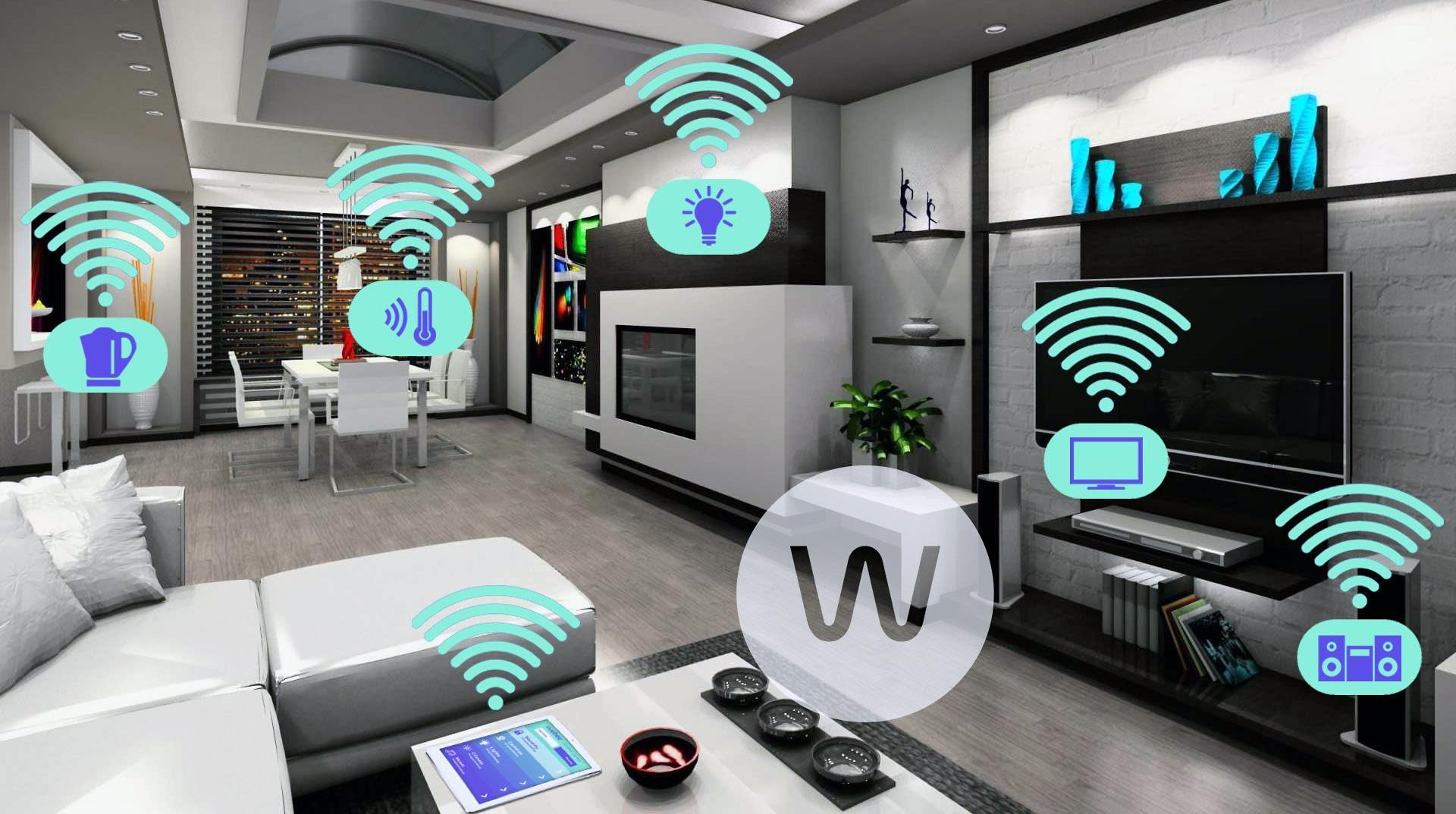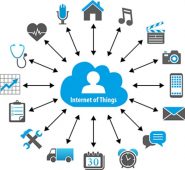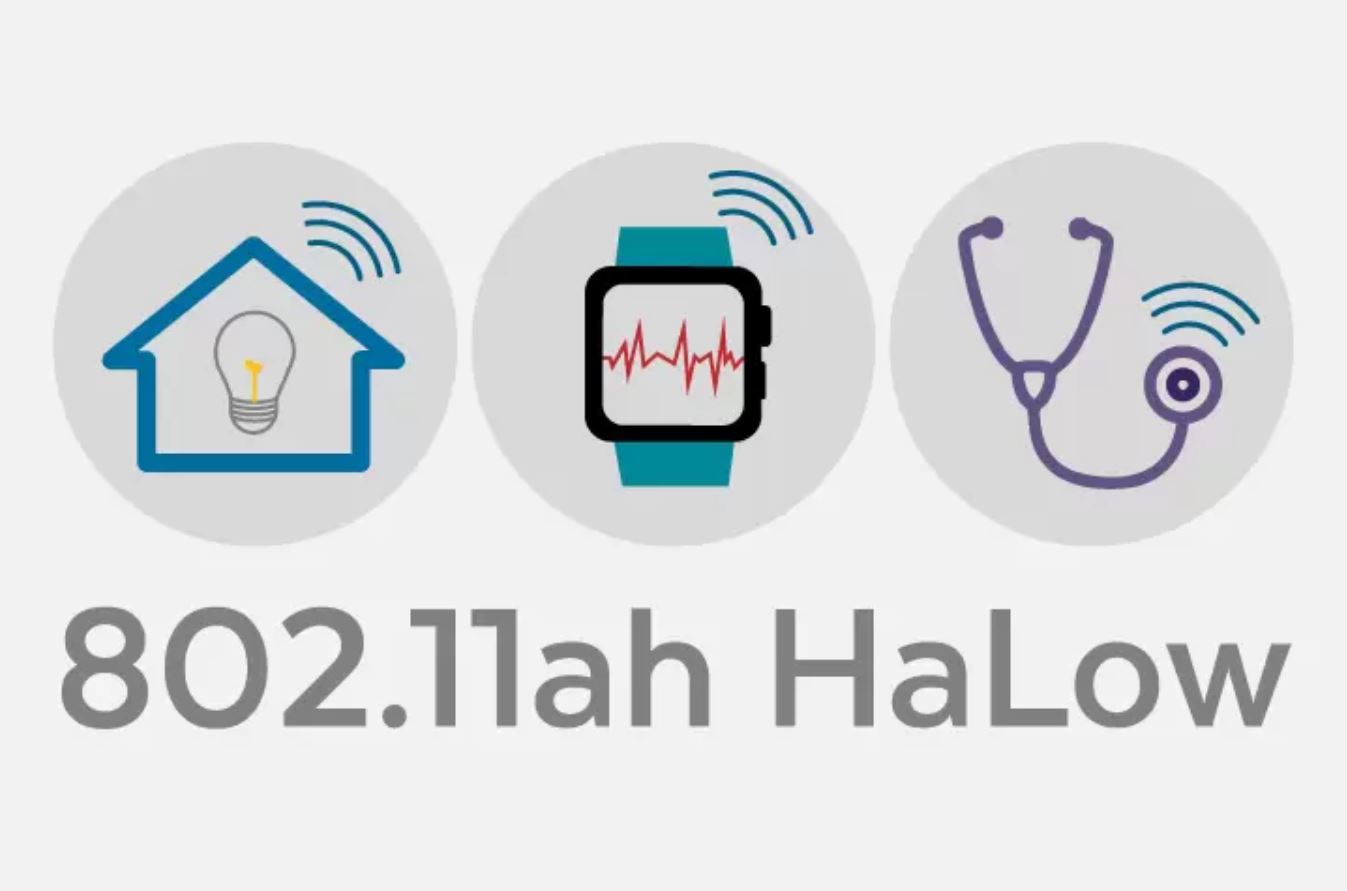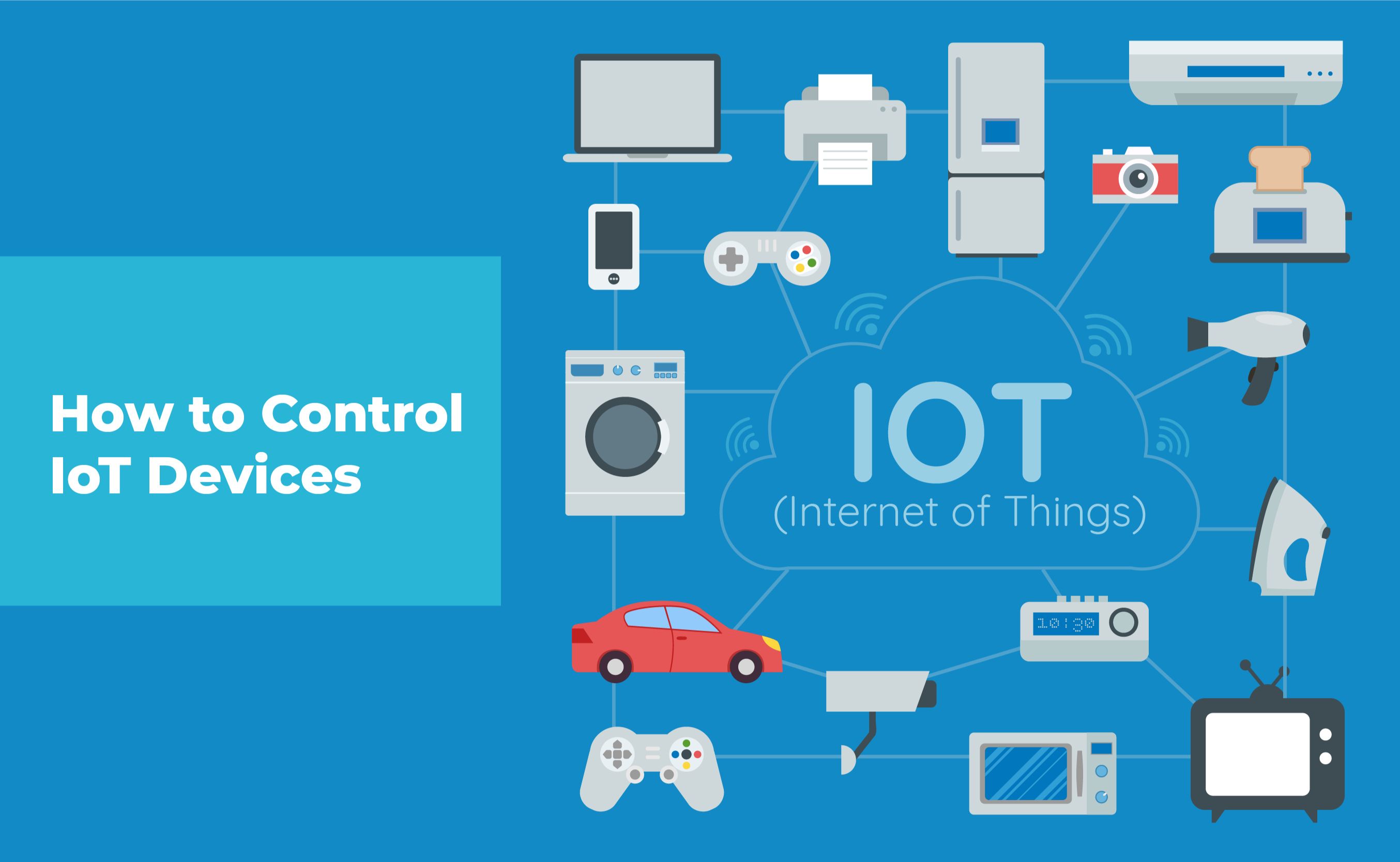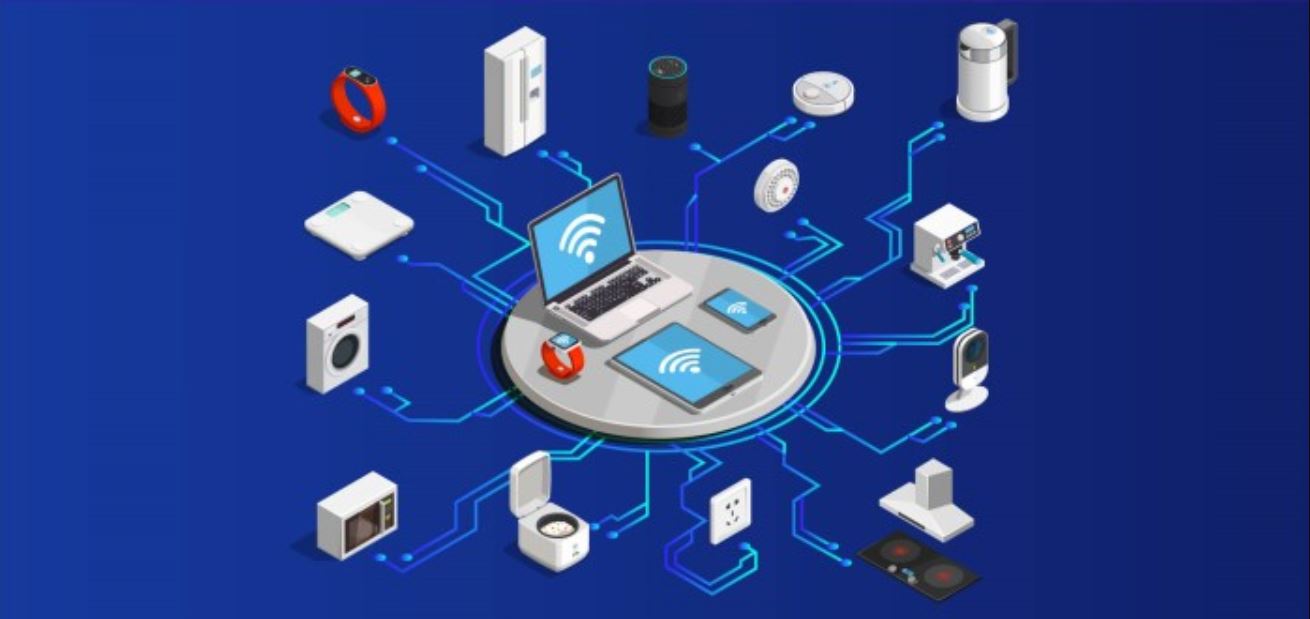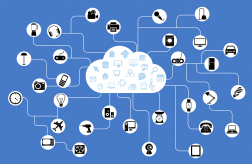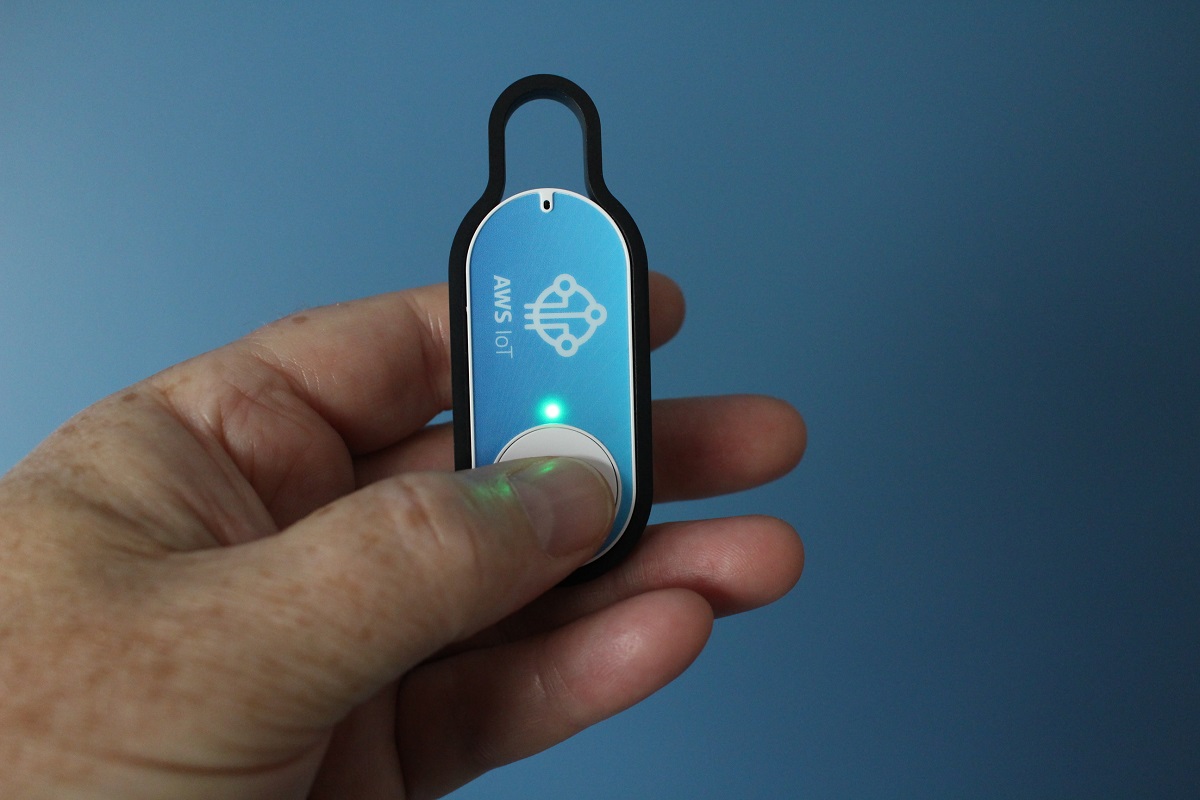Introduction
Welcome to the world of IoT (Internet of Things) and smart home technology! In recent years, these cutting-edge innovations have gained significant popularity and attention. From smartphones to smart TVs, from voice assistants to connected appliances, IoT and smart home technology have revolutionized the way we interact with our surroundings.
But what exactly is IoT? How does it work, and what are the benefits of incorporating smart home technology into our lives? In this article, we will delve into the fascinating world of IoT and smart home tech, exploring their functionalities, advantages, and potential future developments.
The Internet of Things (IoT) refers to the network of physical objects embedded with sensors, software, and connectivity, allowing them to collect and exchange data. These objects can be anything from everyday devices such as refrigerators, thermostats, or light bulbs, to more complex systems like industrial machinery or smart energy grids. By connecting these devices to the internet and enabling them to communicate with each other, IoT opens up a world of possibilities for automation, monitoring, and control.
One of the main advantages of IoT is its ability to make our lives more convenient and efficient. Imagine waking up to a fully brewed pot of coffee, with your smart coffee machine automatically starting brewing when it detects that you’ve turned off your alarm. Or arriving home to a perfectly lit living room, as your smart lighting system adjusts the brightness and color based on your preferences and the time of day.
Beyond convenience, IoT technology also has the potential to greatly improve resource management and sustainability. For instance, smart energy meters can monitor and optimize electricity usage, reducing wastage and lowering utility bills. Similarly, connected irrigation systems can intelligently water plants based on weather forecasts, conserving water and promoting efficient gardening practices.
The integration of IoT into our homes has given rise to the concept of smart home technology. A smart home is equipped with various interconnected devices and systems that can be controlled remotely and automated through a central hub or mobile app. By seamlessly connecting and controlling different aspects of the household, smart home technology offers enhanced comfort, security, and energy efficiency.
In the following sections, we will explore how smart home technology works, the advantages it offers, and some popular devices and technologies that are commonly found in smart homes. We will also discuss the security and privacy concerns associated with IoT and smart home tech, as well as the exciting future developments in these fields. So, let’s dive in and discover the wonders of IoT and smart home technology!
What is IoT?
The Internet of Things (IoT) is a concept that refers to the interconnection of physical devices and objects through the internet. It involves embedding sensors, software, and network connectivity into everyday objects, enabling them to collect and exchange data. These objects can range from simple household appliances like refrigerators or thermostats to more complex systems like industrial machinery or even entire cities.
The main goal of IoT is to create a seamless network where objects can communicate with each other, as well as with humans, to enable smarter decision-making and automation. By connecting devices and sharing information in real-time, IoT has the potential to revolutionize various industries and improve our daily lives in countless ways.
IoT devices collect data through installed sensors, such as temperature sensors, motion detectors, or GPS trackers. This data is then transmitted through wired or wireless networks to cloud-based platforms or local servers for processing. Advanced analytics and machine learning algorithms are applied to make sense of the collected data and derive valuable insights.
One of the fundamental characteristics of IoT is its ability to enable remote monitoring and control of devices. With IoT, it’s possible to access and manage connected devices from anywhere and at any time using smartphones, tablets, or computers. For example, you can adjust the temperature of your home remotely using a mobile app or receive notifications when your refrigerator is running low on groceries.
The benefits of IoT are vast and span across various domains. In industrial settings, IoT enables the concept of Industry 4.0, where machines and systems communicate and collaborate autonomously, leading to increased productivity, streamlined processes, and reduced downtime. In the healthcare industry, IoT has the potential to revolutionize patient monitoring, enabling remote healthcare services and improving the quality of care.
IoT also has a significant impact on urban environments, transforming them into smart cities. Connected sensors and devices can monitor air quality, traffic flow, and waste management, allowing municipalities to optimize resource allocation and enhance the overall livability of the city. Moreover, IoT can improve public safety by enabling smart surveillance systems and emergency response mechanisms.
In summary, IoT is a network of interconnected devices that collect and exchange data, enabling automation, real-time monitoring, and efficient decision-making. Its potential applications are limitless, ranging from improving industrial processes and enhancing healthcare to creating smart homes and cities. As IoT technology continues to evolve, we can expect to see even more innovative and transformative applications that will shape the future of our world.
The Benefits of IoT
The Internet of Things (IoT) offers a wide range of benefits that have the potential to transform industries and enhance our everyday lives. By connecting devices and enabling data exchange, IoT opens up new avenues for automation, optimization, and improved decision-making. Here are some key benefits of IoT:
1. Efficiency and cost savings: IoT enables businesses and individuals to streamline processes and optimize resource utilization. For example, in manufacturing, IoT sensors can monitor equipment performance, detect malfunctions in real-time, and trigger maintenance requests, reducing downtime and improving productivity. In households, smart thermostats can adjust temperature settings based on occupancy and weather conditions, leading to energy savings and lower utility bills.
2. Enhanced productivity and automation: With IoT, tasks that were once manual or time-consuming can be automated, freeing up valuable time and resources. For instance, in agriculture, smart irrigation systems can automatically adjust watering schedules based on soil moisture levels and weather forecasts, eliminating the need for manual monitoring. This automation allows farmers to focus on higher-value activities and achieve better crop yields.
3. Improved safety and security: IoT technology can enhance safety and security measures in various domains. For instance, in transportation, connected vehicles can communicate with each other and with infrastructure, enabling real-time traffic monitoring and collision avoidance. IoT-enabled surveillance systems can provide round-the-clock monitoring, alerting authorities to potential security threats or emergencies.
4. Smart resource management and sustainability: IoT enables intelligent resource management by collecting and analyzing data on resource usage. This data-driven approach can lead to more efficient utilization of resources such as water, energy, and raw materials. For instance, smart grids can balance electricity supply and demand, reducing wastage and promoting renewable energy integration. IoT sensors in homes can provide insights into water consumption patterns, encouraging water conservation efforts.
5. Enhanced quality of life: IoT technology can greatly improve our daily lives by providing personalized and seamless experiences. For example, in healthcare, IoT-enabled wearable devices can continuously monitor vital signs and transmit data to healthcare professionals, allowing for remote patient monitoring and proactive interventions. Smart homes equipped with connected appliances and voice assistants can simplify tasks and create a comfortable and convenient living environment.
6. Data-driven insights and decision-making: IoT generates vast amounts of data from connected devices and sensors. By analyzing this data, businesses can gain valuable insights into consumer behavior, product usage patterns, and operational performance. These insights can drive data-driven decision-making, enabling organizations to identify new opportunities, optimize processes, and deliver more personalized and targeted products and services.
In summary, IoT offers numerous benefits across various sectors, including improved efficiency, enhanced productivity, increased safety, smart resource management, and a better quality of life. As IoT technology continues to advance and evolve, these benefits will become even more pronounced, shaping a connected and intelligent future.
Examples of IoT in Everyday Life
The Internet of Things (IoT) has permeated nearly every aspect of our daily lives, revolutionizing the way we live, work, and interact with the world around us. From the moment we wake up until we go to bed, IoT technology is seamlessly integrated into our routines and environments. Here are some examples of how IoT is enhancing everyday life:
1. Smart Home: Smart home technology is one of the most common and visible applications of IoT in everyday life. From voice assistants like Amazon Echo or Google Home to smart thermostats, lighting systems, and security cameras, IoT enables homeowners to control and automate various aspects of their homes. For example, you can remotely adjust the temperature, turn on/off lights, or monitor security cameras using a mobile app or voice commands.
2. Wearable Devices: Wearable devices like fitness trackers and smartwatches are equipped with IoT capabilities, allowing users to monitor their health and activity levels. These devices can track heart rate, steps taken, calories burned, and even sleep patterns, providing valuable insights for individuals to maintain a healthy lifestyle. They can also send real-time health data to healthcare professionals, enabling proactive interventions and remote patient monitoring.
3. Smart Transportation: IoT technology has transformed the transportation industry, making our commute safer, more efficient, and convenient. Connected cars can communicate with each other and with smart traffic lights to optimize traffic flow and prevent accidents. IoT-enabled GPS tracking systems provide precise navigation and real-time traffic updates, helping drivers save time and avoid congestion. Ride-sharing services like Uber or Lyft rely on IoT for efficient matching and tracking of drivers and passengers.
4. Healthcare and Remote Monitoring: IoT is revolutionizing healthcare by enabling remote patient monitoring and telemedicine. IoT-enabled medical devices, such as glucose monitors or ECG machines, transmit data to healthcare professionals in real-time, enabling timely interventions and reducing hospital visits. Smart pill dispensers can remind patients to take their medication and notify healthcare providers if doses are missed. IoT can also assist in monitoring the elderly, providing safety and peace of mind to both seniors and their caregivers.
5. Smart Agriculture: IoT is transforming the farming industry, making agriculture more efficient and sustainable. Sensors and connected devices monitor soil moisture levels, temperature, and humidity, allowing farmers to optimize irrigation and fertilizer usage. Drones equipped with IoT technology provide aerial imaging and crop monitoring, enabling timely interventions for pest control or disease management. IoT-powered livestock monitoring systems track animal health and behavior, ensuring their well-being.
6. Smart Energy Management: IoT enables intelligent energy management, promoting sustainability and cost savings. Smart meters collect real-time energy usage data, helping homeowners and businesses monitor and optimize their electricity consumption. Connected appliances, such as smart thermostats or energy-efficient lighting, can be programmed to adjust usage based on occupancy or time of day, reducing energy waste. In addition, smart grids use IoT to balance energy supply and demand, integrating renewable energy sources more effectively.
These are just a few examples of how IoT is transforming everyday life. From our homes to our workplaces, from transportation to healthcare, IoT is creating a more connected and intelligent world, enhancing convenience, efficiency, and sustainability.
What is Smart Home Technology?
Smart home technology refers to the integration of various devices, systems, and appliances within a household to create an interconnected and automated living environment. With the help of Internet of Things (IoT) technology, smart homes enable homeowners to control and monitor different aspects of their homes remotely and intelligently.
At the heart of smart home technology is a central hub or smart home automation system that serves as the control center. This hub connects all the devices and systems in the home, allowing them to communicate with each other and with the homeowner via a mobile app or voice commands. By seamlessly integrating these devices, smart homes can enhance convenience, comfort, security, and energy efficiency.
The devices and systems that can be part of a smart home setup are vast and diverse. Some common components include smart thermostats, lighting systems, security cameras, door locks, appliances, entertainment systems, and even kitchen gadgets. These devices are equipped with IoT capabilities, enabling them to be controlled remotely and automated based on predetermined schedules or triggered events.
One of the key features of smart home technology is remote access and control. Homeowners can use their smartphones or other smart devices to monitor and adjust different aspects of their homes from anywhere. For example, they can turn on or off lights, adjust the temperature, lock or unlock doors, or even start appliances before arriving home.
Automation is another essential aspect of smart homes. By setting up routines or rules, homeowners can automate repetitive tasks or create customized scenarios. For instance, you can establish a “Goodnight” routine that turns off all lights, locks the doors, adjusts the thermostat, and activates a security system before going to bed. Alternatively, you can create a “Movie Night” scenario that dims the lights, lowers the blinds, and starts the projector with a single voice command.
Smart home technology also offers enhanced security features. Integrated security systems, including smart cameras and door/window sensors, can provide real-time surveillance and send alerts to homeowners’ devices in case of any unusual activity. Additionally, smart locks allow remote monitoring and control of access to the home, enhancing both security and convenience.
Energy efficiency is another significant advantage of smart home technology. With smart thermostats and energy monitoring devices, homeowners can optimize their heating, cooling, and electricity consumption. These devices can learn and adapt to the homeowners’ preferences and automatically adjust the settings based on occupancy, time of day, or even weather conditions. By reducing energy waste, smart homes contribute to environmental sustainability and cost savings.
In summary, smart home technology enables the integration and automation of various devices and systems within a household. Through remote access, control, and automation, smart homes provide enhanced convenience, comfort, security, and energy efficiency. As technology continues to advance, the possibilities for creating a truly connected and intelligent living environment are expanding, making smart homes an increasingly attractive option for homeowners worldwide.
How Does Smart Home Technology Work?
Smart home technology operates through the integration of devices, systems, and networks to create an interconnected ecosystem within a household. At its core, smart home technology relies on Internet of Things (IoT) capabilities to allow different devices to communicate, share data, and be controlled remotely. Here’s a breakdown of how smart home technology works:
1. Devices and Sensors: Smart home technology encompasses a wide range of devices and sensors that are equipped with IoT capabilities. These devices can include smart thermostats, lighting systems, security cameras, door locks, appliances, and more. Each device is embedded with sensors and communication modules that enable them to collect data, transmit information, and receive commands.
2. Central Hub: A central hub or smart home automation system serves as the control center of the smart home. This hub is responsible for connecting and coordinating all the devices in the network. It acts as a bridge between the devices, relaying commands and data between them. The central hub can be a dedicated device or an app on the homeowner’s smartphone or tablet.
3. Connectivity: Smart home technology relies on different types of connectivity to enable devices to communicate with one another. This can include Wi-Fi, Bluetooth, Zigbee, Z-Wave, or a combination of these protocols. The connectivity allows devices to share information, receive commands, and execute actions based on predefined rules or user input.
4. Mobile Apps and Voice Assistants: Smart home technology often includes dedicated mobile applications or voice assistants that allow homeowners to control and monitor their devices remotely. These apps provide an intuitive interface through which users can manage their smart home devices, set up automation routines, and receive notifications or alerts. Voice assistants like Amazon Echo with Alexa or Google Home with Google Assistant allow users to control their smart home devices using voice commands.
5. Automation and Programming: One key aspect of smart home technology is automation. This allows users to program devices to perform specific actions based on triggers or schedules. For example, a homeowner can set their smart lights to turn on automatically at sunset or create a routine that adjusts the thermostat, locks doors, and turns off lights when they leave the house. Automation allows for seamless control and eliminates the need for constant manual input.
6. Cloud Services: Smart home technology often relies on cloud-based services to enable remote access and storage of data. These services allow homeowners to control their smart home devices from anywhere with an internet connection. Additionally, cloud storage facilitates the integration of devices from different manufacturers and provides a platform for advanced analytics and machine learning algorithms to improve the user experience and device performance.
7. Data Privacy and Security: As with any technology that involves data collection and sharing, smart home technology must address concerns regarding privacy and security. Manufacturers implement encryption and authentication protocols to protect user data and prevent unauthorized access. It is essential for homeowners to ensure they are using secure passwords, regularly update firmware, and keep their devices and networks protected from potential vulnerabilities.
In summary, smart home technology works by connecting and integrating various devices and systems in a household through IoT capabilities. The central hub and connectivity protocols facilitate communication and control between the devices, while mobile apps and voice assistants provide an interface for homeowners to manage and monitor their smart home. Automation, cloud services, and data security are key components of the smart home technology ecosystem, contributing to enhanced convenience, control, and efficiency in daily life.
Advantages of Smart Home Technology
Smart home technology offers numerous advantages that enhance the way we live, providing convenience, comfort, efficiency, and security in our daily lives. Here are some key advantages of smart home technology:
1. Convenience: One of the primary benefits of smart home technology is the convenience it offers. Through remote access and control, homeowners can manage and automate various aspects of their homes from anywhere. Whether it’s adjusting the thermostat, turning on or off lights, or monitoring security cameras, all can be done with the tap of a button or a voice command.
2. Energy Efficiency: Smart home technology allows for better energy management, leading to increased energy efficiency and cost savings. Connected devices, such as smart thermostats or energy monitoring systems, can learn user habits and adjust energy consumption accordingly. For example, lights can automatically turn off when a room is unoccupied, or the thermostat can optimize temperature settings based on occupancy patterns, reducing waste and lowering utility bills.
3. Security: Smart home technology enhances security by providing advanced monitoring and control capabilities. Homeowners can remotely access and view security cameras, receive real-time notifications for unusual activities, and even lock or unlock doors from anywhere. Smart doorbell cameras allow for two-way communication and provide additional security by allowing homeowners to see and speak with visitors without opening the door.
4. Comfort and Automation: With smart home technology, homeowners can experience enhanced comfort and automation. Devices and systems can be programmed to perform specific actions or routines based on triggers or schedules. For example, smart lighting systems can automatically adjust brightness and color temperature according to the time of day or personal preferences. Automation enables seamless control and eliminates the need for constant manual intervention.
5. Peace of Mind: Smart home technology provides peace of mind by offering increased control, monitoring, and safety. Homeowners can remotely check on their homes, receive alerts for security breaches or potential hazards, and even simulate occupancy when away to deter burglars. Additionally, elder care monitoring systems can help ensure the well-being of older family members by detecting falls or unusual activity patterns.
6. Integration and Compatibility: Smart home technology allows for the integration and compatibility of various devices from different manufacturers. This enables homeowners to choose from a wide range of products and create a customized smart home ecosystem that suits their needs and preferences. With interoperability, devices can seamlessly communicate and work together, providing a more cohesive and user-friendly experience.
7. Remote Monitoring and Management: Smart home technology enables remote monitoring and management of household systems and devices. Homeowners can receive real-time updates and notifications on their mobile devices, ensuring that they are informed about their home’s status and can take appropriate actions when needed. This level of control and oversight offers peace of mind, especially when away from home for extended periods.
In summary, smart home technology offers a multitude of advantages, including convenience, energy efficiency, enhanced security, comfort, and peace of mind. By leveraging connected devices, automation, and remote accessibility, smart homes provide a seamless and personalized living experience that enhances the quality of life for homeowners. As adoption of smart home technology continues to grow, these advantages will become increasingly prevalent, transforming the way we live and interact with our homes.
Popular Smart Home Devices and Technologies
Smart home technology has rapidly evolved in recent years, resulting in a wide range of devices and technologies that enhance the functionality and convenience of our homes. Here are some popular smart home devices and technologies that have gained immense popularity among homeowners:
1. Smart Speakers and Voice Assistants: Smart speakers, like Amazon Echo with Alexa or Google Home with Google Assistant, have become a centerpiece of many smart homes. These devices serve as a hub for voice control and provide a wide range of functions, including playing music, answering questions, controlling other smart devices, and managing daily tasks.
2. Smart Thermostats: Smart thermostats have revolutionized home heating and cooling systems, allowing homeowners to control and automate temperature settings remotely. These devices learn user preferences and adjust temperature based on occupancy and weather conditions, resulting in energy savings and increased comfort.
3. Smart Lighting Systems: Smart lighting systems offer convenience and energy efficiency through features such as dimming, color adjustment, and automation. With the ability to control lights remotely or set up schedules, homeowners can easily create various lighting scenes for different moods or activities.
4. Smart Security Systems: Smart security systems provide advanced monitoring and control capabilities, offering homeowners peace of mind. These systems typically include smart cameras, door/window sensors, motion detectors, and smart door locks. They can be remotely accessed and monitored, send real-time alerts, and provide video footage that helps deter intruders and enhance home security.
5. Smart Doorbells: Smart doorbells have become increasingly popular for their security and convenience features. These devices incorporate a video camera, two-way audio, and motion sensors, allowing homeowners to see and communicate with visitors remotely. They provide an extra layer of security and enable users to monitor package deliveries or screen unfamiliar guests.
6. Smart Appliances: Smart appliances, such as refrigerators, ovens, washing machines, and dishwashers, offer increased efficiency, convenience, and automation. They can be controlled remotely, provide notifications for maintenance or status updates, and even offer integration with meal planning or grocery ordering services.
7. Smart Blinds and Shades: Smart blinds and shades allow homeowners to control natural light and privacy remotely. These motorized window coverings can be adjusted using a mobile app or voice commands, creating personalized lighting and reducing energy usage by optimizing natural light.
8. Smart Entertainment Systems: Smart entertainment systems, including smart TVs, streaming devices, and home theater systems, offer enhanced connectivity and control. These devices allow for seamless streaming of online content, voice control, and integration with other smart devices for a truly immersive home entertainment experience.
9. Smart Plugs and Outlets: Smart plugs and outlets enable homeowners to control and schedule the power supply to devices connected to them. With these devices, regular appliances can become smart, allowing remote activation or automation of devices that are not inherently IoT enabled.
10. Smart Water Systems: Smart water systems help homeowners monitor and conserve water usage. They can detect leaks, measure water flow, and provide insights into water consumption patterns. These systems can contribute to water conservation efforts and reduce utility costs.
These are just a few examples of the popular smart home devices and technologies available in the market. The continuous advancements in smart home technology will likely lead to even more innovative and intelligent devices, offering homeowners greater convenience and control over their homes.
Security and Privacy Concerns with IoT and Smart Home Technology
While IoT and smart home technology offer numerous benefits, they also raise security and privacy concerns that must be addressed. The interconnected nature of these technologies and the collection of personal data can expose both individuals and households to potential risks. Here are some key security and privacy concerns associated with IoT and smart home technology:
1. Data Privacy: The collection and storage of personal data by smart devices raise concerns about data privacy. IoT devices gather data such as daily routines, consumption patterns, and even sensitive information like health data. Unauthorized access to this data can compromise privacy and potentially be used for nefarious purposes. Manufacturers and service providers must ensure robust data encryption, secure storage, and clear data management practices to safeguard user privacy.
2. Device Vulnerabilities: IoT devices are susceptible to security vulnerabilities, as they often lack stringent security features and may have outdated software or firmware. Hackers can exploit these vulnerabilities to gain unauthorized access, control devices, or even create botnets for cyberattacks. Regular security updates, strong encryption, and secure authentication protocols are vital to protect against such attacks.
3. Network Security: The integration of numerous IoT devices within a smart home increases the attack surface and poses challenges to network security. Each connected device becomes a potential entry point for cybercriminals. Weak Wi-Fi security, open ports, or inadequate router configurations can expose vulnerabilities. It is crucial to set up secure Wi-Fi networks, change default passwords, and employ proper network segmentation and firewalls to protect against unauthorized access.
4. Unencrypted Communication: Inadequate encryption of communication between IoT devices and the central hub or cloud services can leave data in transit vulnerable to interception or tampering. Encryption protocols like SSL/TLS should be implemented to ensure secure transmission of data within the smart home ecosystem.
5. Phishing Attacks and Social Engineering: Smart home technology relies heavily on mobile apps and voice assistants, which can be susceptible to phishing attacks and social engineering. Careless handling of login credentials, voice command recordings, or sharing personal information with unauthorized individuals can compromise security. Users must practice good security hygiene, such as using strong and unique passwords, being cautious of suspicious requests, and regularly updating software.
6. Data Breaches: A data breach within the smart home ecosystem can lead to the exposure of personal information, including home addresses, schedules, or financial details. Smart home device manufacturers and service providers must prioritize data protection, implementing robust security measures to prevent unauthorized access or data breaches. Transparent communication and timely disclosure of any security incidents are essential to maintain customer trust.
7. Third-Party Access: Integrating third-party services and devices into the smart home ecosystem introduces additional security risks. These third-party devices or services may have varying levels of security practices, potentially compromising the overall security of the smart home network. It is important to assess the security posture of third-party devices and services before integrating them into the smart home environment.
Addressing these security and privacy concerns requires a collaborative effort from manufacturers, service providers, and users themselves. Ensuring robust security measures, strong encryption, regular software updates, and user education regarding security best practices are crucial steps towards developing a more secure and privacy-focused IoT and smart home ecosystem.
Future of IoT and Smart Home Technology
The future of IoT and smart home technology holds immense potential for further innovation and transformation. As technology continues to advance, we can expect exciting developments that will shape the way we interact with our homes and the world around us. Here are some key trends and possibilities for the future of IoT and smart home technology:
1. Artificial Intelligence and Machine Learning: Artificial Intelligence (AI) and Machine Learning (ML) will play a significant role in the evolution of IoT and smart home technology. AI-powered devices and algorithms will become smarter and more intuitive, enabling contextual understanding and personalized experiences. Smart home systems will learn user preferences, anticipate needs, and proactively make adjustments based on patterns and data analysis.
2. Voice Control and Natural Language Processing: Voice assistants equipped with natural language processing capabilities will continue to improve, enabling more natural and conversational interactions with smart home devices. Enhanced speech recognition and understanding will make voice control more accurate and seamless, allowing users to control and manage their smart homes effortlessly.
3. Integration of Augmented Reality and Virtual Reality: IoT and smart home technology may embrace augmented reality and virtual reality to enhance user experiences. Virtual walkthroughs will enable homeowners to visualize smart home modifications or renovations before implementation. Augmented reality overlays can provide real-time information about the status of devices or systems, enhancing troubleshooting and maintenance processes.
4. Increased Interconnectivity: IoT devices will become more interconnected and interoperable, enabling seamless communication and collaboration between different devices, brands, and ecosystems. This interconnectivity will allow for a more cohesive and integrated smart home experience, removing barriers and giving homeowners more flexibility and control over their devices.
5. Expanded Home Automation and Self-Learning Systems: Automation will become more sophisticated, with smart home systems incorporating advanced algorithms and machine learning to automate routine tasks and adapt to user habits. Homes will become self-learning environments, constantly adjusting and optimizing based on occupant behavior, energy usage patterns, and other factors.
6. Energy Optimization and Sustainability: Smart home technology will continue to contribute to energy optimization and sustainability efforts. Advanced energy monitoring systems will provide real-time data on consumption, allowing homeowners to further reduce energy waste and integrate renewable energy sources. Smart grid integration will become more prevalent, enabling homes to be part of a larger energy ecosystem.
7. Enhanced Security and Privacy Measures: As the number of connected devices increases, there will be a greater focus on strengthening security and privacy measures. Manufacturers and service providers will develop more robust authentication protocols, encryption methods, and secure data storage practices to protect user information. User awareness and education regarding best security practices will also play a crucial role in ensuring a secure smart home environment.
8. Healthcare Monitoring and Assistance: IoT and smart home technology will continue to play a crucial role in healthcare, enabling remote patient monitoring, telemedicine, and personalized healthcare delivery. Smart home systems will integrate seamlessly with healthcare providers, allowing for proactive health monitoring, medication management, and emergency response mechanisms.
In summary, the future of IoT and smart home technology holds incredible potential for transforming homes into more intelligent, efficient, and personalized spaces. With advancements in AI, voice control, interconnectivity, and energy optimization, smart homes will continue to enhance comfort, convenience, and sustainability for homeowners. As the technology evolves, addressing security and privacy concerns will remain a key focus, ensuring that users can confidently embrace the benefits of an interconnected smart home ecosystem.
Conclusion
IoT and smart home technology have revolutionized the way we interact with our homes and the world around us. Through the integration of interconnected devices and advanced automation, smart homes offer enhanced convenience, comfort, security, and energy efficiency. From controlling lights and thermostats with a voice command to remotely monitoring security cameras or managing appliances, smart home technology has become an integral part of our daily lives.
The benefits of IoT and smart home technology are vast, ranging from increased energy savings and improved resource management to enhanced safety and personalized experiences. The future of IoT and smart homes holds even greater promise, with advancements in artificial intelligence, voice control, and interconnectivity on the horizon. As technology evolves, it will continue to shape and transform our homes, making them more intelligent, efficient, and sustainable.
However, it is crucial to address the security and privacy concerns associated with IoT and smart home technology. Data privacy, device vulnerabilities, network security, and third-party access must be carefully managed to ensure the protection of personal information and prevent unauthorized access. Manufacturers, service providers, and users must collaborate to implement robust security measures and adhere to best practices to mitigate risks and build trust in smart home ecosystems.
In conclusion, IoT and smart home technology have the potential to enhance our lives in countless ways. By embracing the convenience, efficiency, and personalized experiences that smart homes offer, we can shape a future where our homes become intelligent, adaptable, and environmentally conscious. As technology continues to advance, the possibilities for creating smarter, safer, and more sustainable homes are truly limitless.







